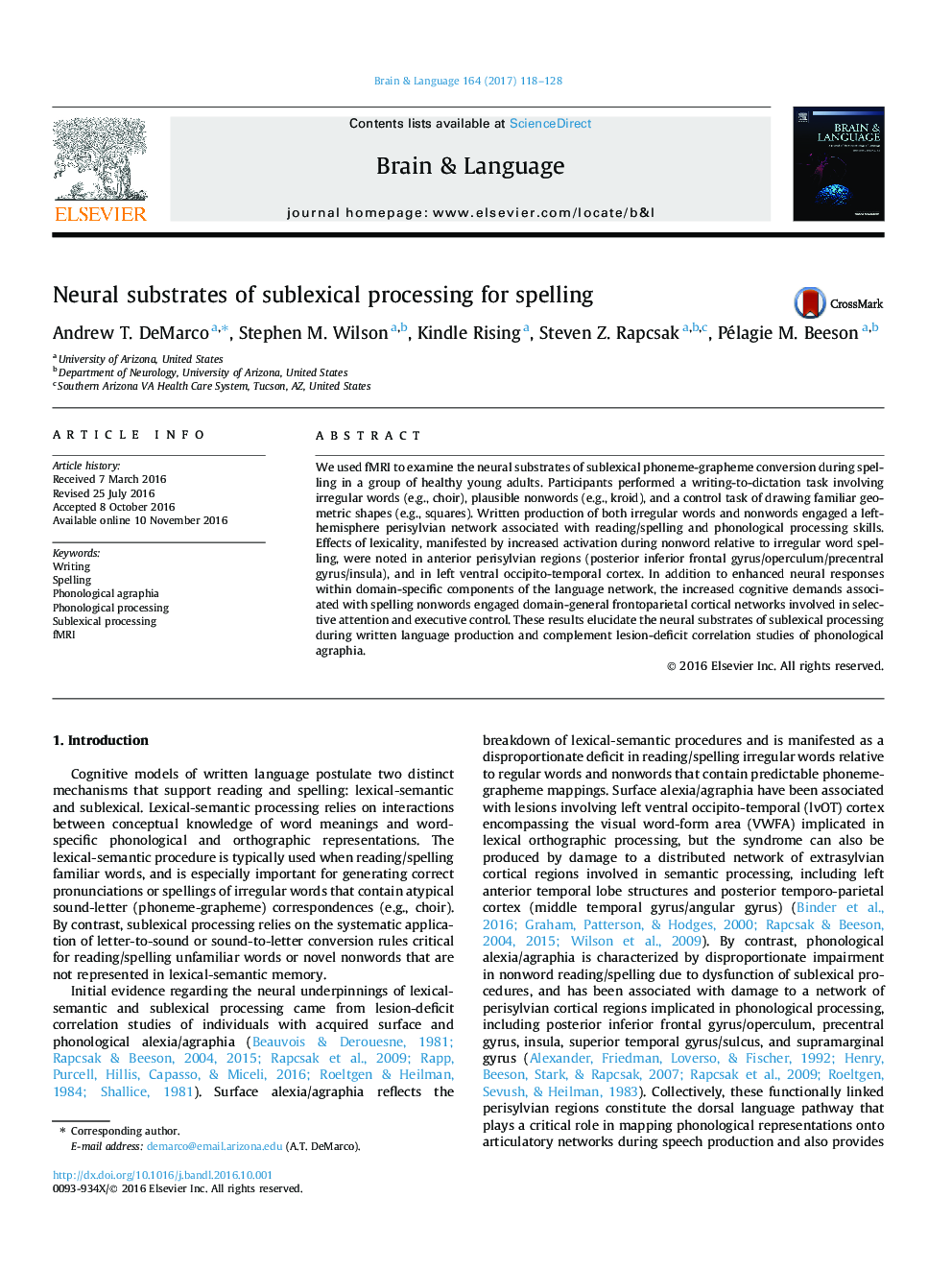| کد مقاله | کد نشریه | سال انتشار | مقاله انگلیسی | نسخه تمام متن |
|---|---|---|---|---|
| 5041298 | 1474020 | 2017 | 11 صفحه PDF | دانلود رایگان |
- Nonword spelling recruits left-lateralized language and domain-general networks for attention.
- FMRI findings for nonword spelling are generally consistent with studies of nonword reading.
- Results support the idea that sublexical spelling depends on dorsal language pathway.
We used fMRI to examine the neural substrates of sublexical phoneme-grapheme conversion during spelling in a group of healthy young adults. Participants performed a writing-to-dictation task involving irregular words (e.g., choir), plausible nonwords (e.g., kroid), and a control task of drawing familiar geometric shapes (e.g., squares). Written production of both irregular words and nonwords engaged a left-hemisphere perisylvian network associated with reading/spelling and phonological processing skills. Effects of lexicality, manifested by increased activation during nonword relative to irregular word spelling, were noted in anterior perisylvian regions (posterior inferior frontal gyrus/operculum/precentral gyrus/insula), and in left ventral occipito-temporal cortex. In addition to enhanced neural responses within domain-specific components of the language network, the increased cognitive demands associated with spelling nonwords engaged domain-general frontoparietal cortical networks involved in selective attention and executive control. These results elucidate the neural substrates of sublexical processing during written language production and complement lesion-deficit correlation studies of phonological agraphia.
Journal: Brain and Language - Volume 164, January 2017, Pages 118-128
